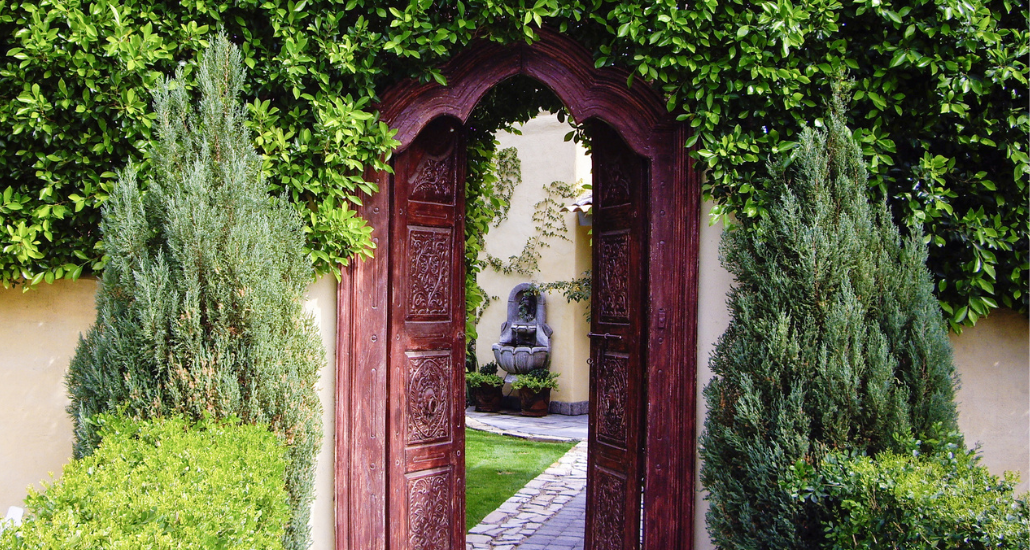I spent years trying to escape anxiety before I found the way out. I meditated, followed guided visualizations, tried every calm-down method I could find in self-help books.
After years of this, I got a chance to have my brain “mapped”; in other words, researchers stuck a lot of electrical sensors to my head, then wired them up to a computer that showed a display of my brain waves in real time.
Guess what they found out? I have anxiety. Stop the presses.
I asked how to see my anxiety, maybe reduce it. The researchers showed me a spiky line on the computer that recorded my anxious brain waves. My job, they said, was to make that line go flat.
“Ha ha!” I thought, “I know how this works!”
I didn’t know how it worked.
For almost an hour I did my meditations, visualizations, and other tricks. I created a lot of slow, even brain waves that meant I was relaxed. But weirdly, the jagged line above those smooth ones remained jagged. I was still anxious, just calmer about that fact.
“But how does this work?” I thought. “How can I be both calm and anxious?”
At that moment, the jagged anxiety line began to smooth out. I had stumbled through the secret doorway that leads away from anxiety. That doorway wasn’t zen-like peace. It was curiosity.
The Real Opposite of Anxiety
When you see something strange, part of your brain gets spooked, often putting you into the fight-or-flight stage. But there’s another, equally automatic reaction: You get curious about the strange thing. Focusing on curiosity can pull you out of anxiety and into calm.
This is why we rubberneck at accidents and watch murder shows on TV: We evolved to be curious about the very things that frighten us. That way, we learn from threatening situations how to prevent disaster in the future.
In his book Unwinding Anxiety, Dr. Judson Brewer mentions one way he likes to help anxious people. It’s a simple sound, not even really a word. The sound is: “Hmmmm.”
When people hear this sound, they think something interesting is present, and become curious. Just by saying “Hmmmm” to his patients, Dr. Brewer can help them pass through the door from anxiety into curiosity.
Going Through the Door
You can practice this first step out of anxiety any time, just by thinking a few curious thoughts. Fortunately, the very things that scare us also make us most curious, so this process can actually be internally rewarding.
Think of something that makes you anxious (for me, the top score almost always goes to climate change and the destruction of the earth’s ecosystems).
Got one?
Now start asking some genuine questions about how this thing works. Ask some questions, then go online and begin looking for the answers. Just like that, you’re feeding your curiosity. At the same time, you’re bringing your anxiety levels down.
Curiouser and Curiouser
I use this method myself when I feel anxious. It always helps. For example, when I Google “Can we reverse climate change?” I get answers that fascinate me and make me feel, as Alice in Wonderland put it, “curiouser and curiouser.”
While doing this recently, I learned that restoring microorganisms to soil depleted by modern agriculture can “draw down” carbon from the atmosphere. “How does that work?” I wondered. “Can I do it in a small way myself? What’s the best method I can use?”
If you try this, setting out to understand what scares you, you’ll discover that nurturing your curiosity can replace anxiety with fascination. You may even start solving your problems.
That’s what our brains are designed to do.
Today, when something makes you nervous or uneasy, try looking at it and thinking: “Hmmm.” Ask some questions about whatever unnerves you. Start looking for some answers.Just like that, you’ll open the door that leads out of misery and into the realm of learning and problem-solving. If you want to be anxiety-free, you know the way: Just get curiouser and curiouser.
Discover additional articles, videos, podcast episodes, and mini-books in Martha’s series on anxiety on The Beyond Anxiety Hub.
Join the mailing list to be notified when Martha releases a new article.










